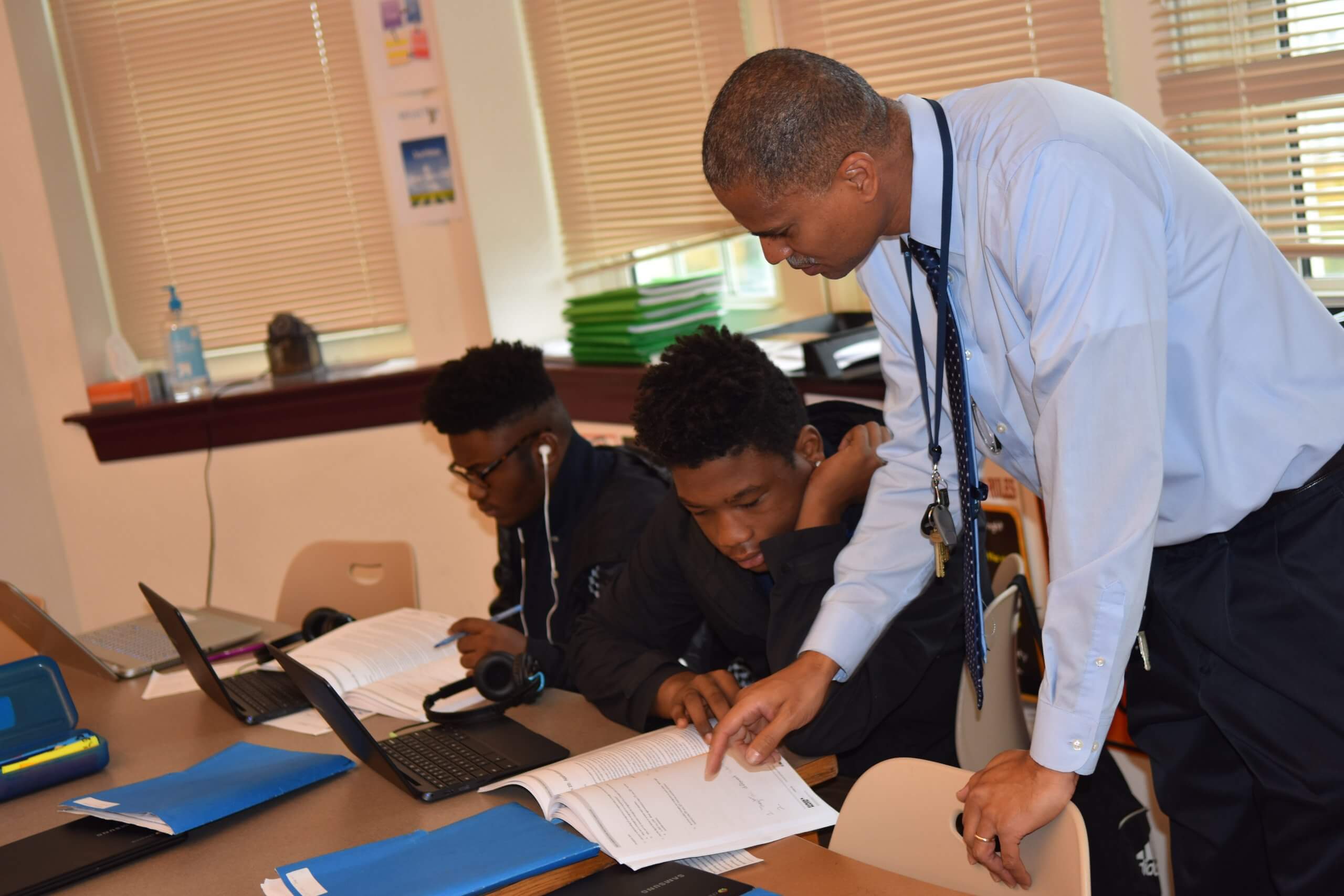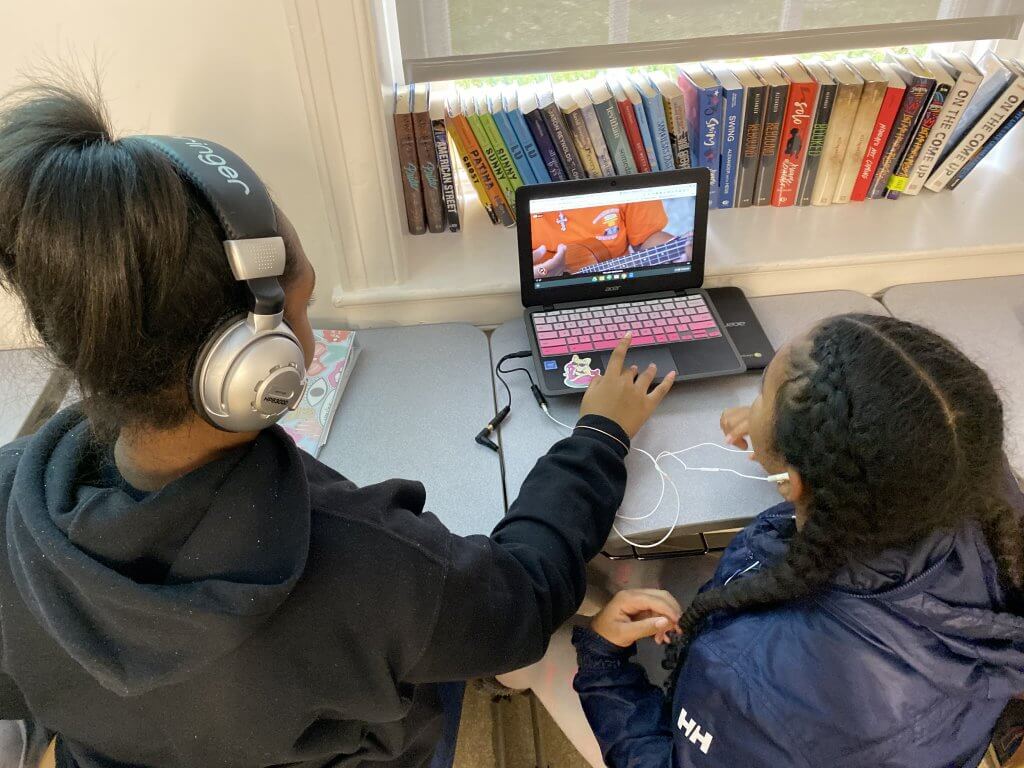
It’s a question everyone in education is asking: What will next school year look like? While the answer will vary across schools and districts, we know for certain we will not be going back to normal. When schools welcome students back in the fall, it will be different; it HAS to be different. The pandemic has changed everything from the way we work, to the way we connect with friends and family, to the way students access instruction.
There have been incredible challenges over the last twelve months but also opportunities to innovate and disrupt traditional ways of teaching. When the pandemic forced school closures in March, over 20,000 educators turned to the Modern Classrooms Project’s blended, self-paced, mastery-based instructional model.
While there are still challenges that lie ahead, the Modern Classrooms Project can support educators and students as they return to in-person learning and begin to address the social-emotional and academic impacts of COVID-19. Educators can also effectively differentiate instruction and deepen student learning by using technology tools like Swivl coupled with the Modern Classrooms Project instructional model.
Learning levels have widened
There have always been a broad diversity of learning levels within a classroom but the pandemic has only made these gaps more extreme. While some students thrived in the remote and hybrid learning setting, many have suffered academically, socially, and emotionally. A recent analysis of student learning loss due to the pandemic found that students learned only 67 percent of the math and 87 percent of the reading that grade-level peers would typically have learned by the fall. The learning loss was especially severe for students of color, where scores were 59 percent of the historical average in math and 77 percent in reading.
Students’ varying academic levels will need an instructional model that meets them where they are.The Modern Classroom instructional model replaces a one-size-fits-all approach with differentiated instruction and flexible structures that meet the unique needs of each and every student. Students are no longer pushed ahead to a new lesson each day. They can take the time they need to truly master new content and only progress when they are ready.
Centering student relationships
Children and adolescents have not been spared the unique stresses of the last year. Some students may have lost a loved one or experienced economic hardship due to a parent losing their job. Some may have become more aware of systemic racism, climate change, and other societal issues like food insecurity and healthcare availability. It is critical that schools are responsive to the unique experiences, attitudes, and feelings students will bring back to the classroom. While this is a global problem, there are things that any individual teacher can do to start addressing these needs. When in-person learning resumes, we know there will be a temptation to be singularly focused on academic content to make up for learning loss. While it’s important to build students’ academic skills, it will be equally as important to focus on students’ social and emotional well-being and foster positive relationships with them.
The Modern Classroom instructional model allows educators to spend less time delivering whole group instruction and more time working closely with students. By leveraging blended instruction through teacher-created videos, teachers can use valuable class time for supervising small group work, checking in with students one-on-one, and providing meaningful and personalized support. This small group and one-on-one time helps foster healthy, trusting relationships with students. Relational teaching takes work and time, but it is the key to building supportive school communities for our students.

Disruptions will continue
Modern Classroom educators report that our model provides them with flexibility to more easily transition between in-person, hybrid, and remote learning environments and assist students who miss class. According to a 2016 Department of Education report, 21% of high school students miss more than fifteen days of school per year. This number could be even higher next year. Students may miss school for a variety of reasons outside of their control and should have opportunities to access content and pick up where they left off. In Modern Classrooms, students can access content at any time and from any place via teacher-created instructional videos.
Blended, self-paced, mastery-based classrooms put students in the driver’s seat of their own learning. Students don’t have to wait for whole-class direct instruction to access new content: they can easily hit play and watch a short instructional video created by their teacher. After watching this instructional video, students can proceed to their assignments and apply what they have learned. Students control the pace of their learning as they move from lesson to lesson. When students are in control of their learning, they naturally take more responsibility for their learning. This learner independence is a 21st century skill that will benefit students long after their school days are over.
Leveraging technology
Modern Classroom educators were at an advantage when the pandemic struck because they were comfortable leveraging technology to facilitate learning. But for many teachers, technology was not as commonplace in their classrooms and they had to quickly learn how to use new platforms, apps, and technology tools. Now that educators have these new technology skills, they can’t let them go to waste. Educators can harness their use of technology and serve their students even better than before.
As students across the country adapted to remote and hybrid learning, they, too, became more familiar with education technology and its various uses. For Modern Classroom students, the transition to remote and hybrid learning was made easier by their expertise using technology to access instruction. A study by John Hopkins University found 66% of students in a Modern Classroom report that they learn how to use technology in class compared to only 47% of students in a traditional classroom, and that 100% of Modern Classroom educators felt they used technology effectively. In the last year, districts have invested more heavily in technology devices and infrastructure and it will be important that their instructional models support the effective and efficient use of this new technology.
Preventing burnout
Teaching is challenging even in the best of circumstances, and the pandemic has made it substantially harder and put immense pressure on educators. An alarming poll from the National Education Association found that nearly one in three teachers are more likely to resign or retire early due to COVID. At a time when educator’s stress levels are soaring, it’s critically important that they feel supported.
Modern Classroom educators report that our model makes teaching more sustainable. They are able to focus less on delivering content in real-time and focus more on connecting with students one-on-one and creating learning environments where students flourish personally and academically.
Join the conversation with Swivl and the Modern Classrooms Project
Want to engage in more discussions about this topic and hear first-hand perspectives from Modern Classroom educators? Join us on April 15 at 5:30 p.m. ET and hear from Modern Classroom educator Moira Mazzi on how the blended, self-paced, mastery-based model has helped her overcome the challenges of remote teaching and will ease her and her students’ transition back to in-person learning.
You can get started learning the Modern Classroom instructional model and bring new teaching strategies to our own classroom by enrolling in their Free Online Course at learn.modernclassrooms.org.